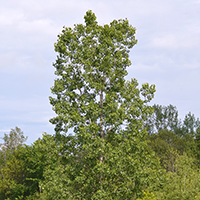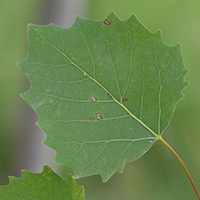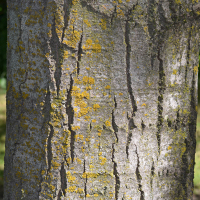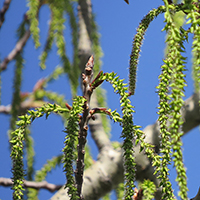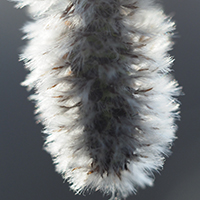What largetooth aspen looks like
Size and shape
- Fast-growing, short-lived tree.
- Reaches 20 metres high.
Leaves
- Round with coarsely toothed edges.
- White fuzzy hairs on the underside.
Bark
- Young bark is pale green to yellowish gray.
- Becomes dark gray and deeply furrowed with age.
Flowers
- Long, yellow-green catkins.
- Produce cottony seeds in late spring.
Where largetooth aspen is found
Largetooth aspen can be found throughout Southern Ontario and north to Temiskaming Shores and Sault Ste. Marie. A separate population grows near the Ontario-Minnesota border.
What you need to know to grow largetooth aspen
- Moisture: can tolerate moist to dry soil.
- Soil: adaptable to a variety of soils.
- Shade: intolerant of shade, grows best in full sun.
- Cautions:
- environment: since largetooth aspen is a short-lived species with a large, suckering root system, plant it in naturalized areas for easiest maintenance
Benefits and uses of largetooth aspen
Wildlife benefits
Grouse and other birds eat largetooth aspen buds and leaves. Mammals such as white-tailed deer and moose browse largetooth aspen saplings.
Commercial uses
Largetooth aspen is not a popular woodworking species but can be used for veneer, plywood, pulp and paper.
Fun facts about largetooth aspen
- The green inner bark of largetooth aspen can photosynthesize to feed the tree before the leaves emerge in spring.
Updated: November 22, 2023
Published: July 18, 2014
